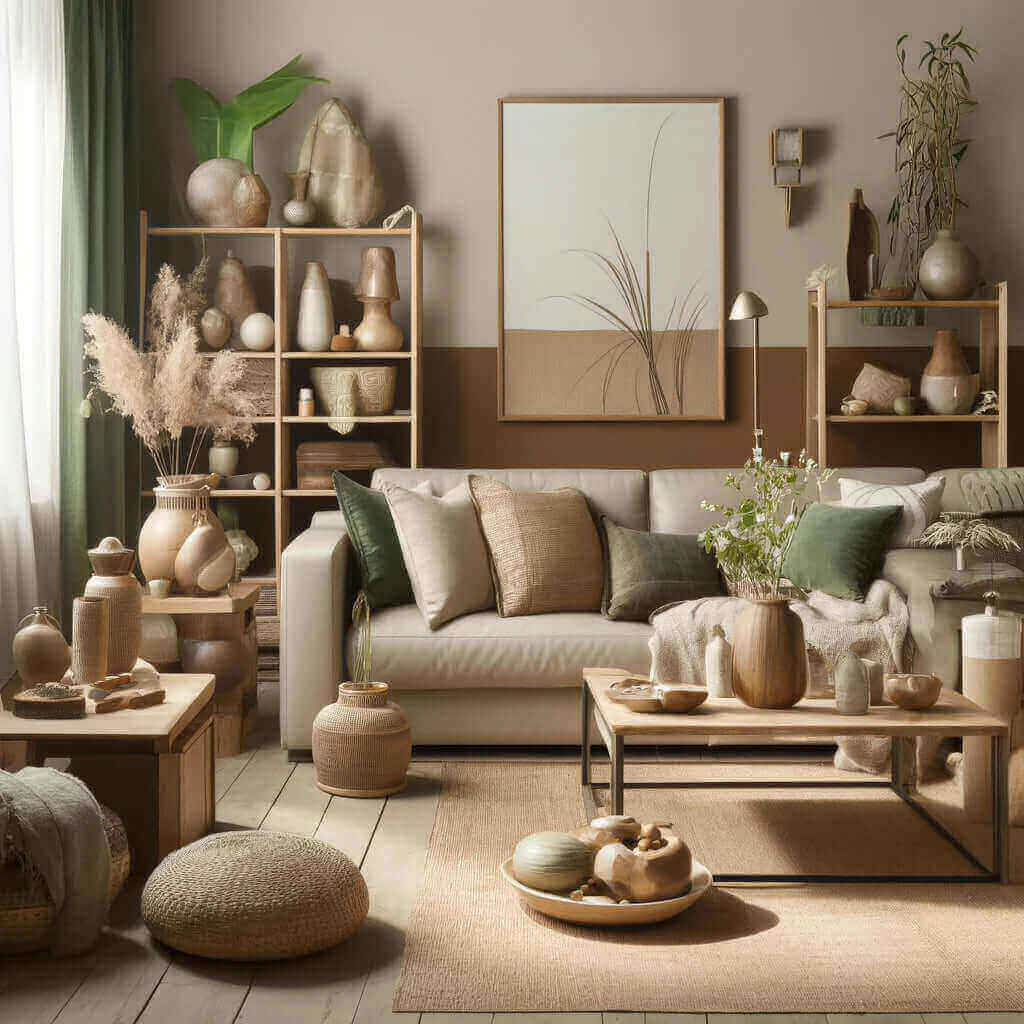
Vegan-Friendly Interiors: Creating Compassionate Living Spaces
|
|
Time to read 4 min

Discover new arrivals in modern lighting, home decor, and Scandinavian design—updated weekly...
|
|
Time to read 4 min
The ascent of veganism, marked by a significant 10.7% CAGR in the vegan food market from 2023 to 2030, mirrors a broader shift towards sustainability and ethical living that transcends dietary choices. This wave of change is sweeping into the realm of interior design, where the demand for vegan-friendly interiors is burgeoning. As we pivot towards these compassionate choices, it's crucial to identify non-vegan products that pervade our spaces and explore viable, cruelty-free alternatives.
Creating a vegan-friendly interior requires awareness of common non-vegan materials traditionally used in home decor. Here are some key items to avoid:
Traditionally used in furniture, rugs, and accessories, leather and suede are direct products of the animal industry. Their production involves significant ethical and environmental concerns, making them unsuitable for a compassionate home. The leather industry is notorious for its environmental footprint; according to a report by the United Nations, leather processing is responsible for about 17% of all industrial water pollution. Additionally, the production of leather involves harmful chemicals like chromium, which pose severe health risks to workers and surrounding communities. Ethically, the leather industry relies on the exploitation and slaughter of animals, with estimates suggesting that over 1 billion animals are killed annually for leather production. This stark reality highlights the importance of seeking alternatives such as plant-based leathers, which offer similar aesthetics without the ethical and environmental costs.
Wool and silk, commonly found in carpets, upholstery, and window treatments, are derived from animals and often involve processes that raise significant ethical concerns. The wool industry, for example, frequently practices mulesing, a painful procedure performed on sheep to prevent flystrike. Beyond the pain inflicted, sheep are often subjected to harsh shearing processes, leading to injuries and stress. Silk production, on the other hand, involves boiling or gassing silkworms alive to extract the fibers, a practice that results in the death of billions of silkworms each year. The environmental impact of wool and silk production is also considerable; the methane emissions from sheep contribute to greenhouse gases, while silk farming requires large amounts of water and pesticides. Alternatives like organic cotton, bamboo, and synthetic fibers offer ethical and sustainable options that do not compromise on quality or luxury.
Down, commonly used for pillows and bedding, is the soft undercoat of birds such as ducks and geese. The extraction process for down is often painful and inhumane, involving live-plucking where feathers are torn from the birds' skin while they are still alive. This brutal practice causes immense suffering and distress to the animals. Additionally, the farming practices associated with down production contribute to significant environmental degradation, including water pollution from runoff and the overuse of antibiotics, which can lead to resistant bacterial strains. With the global market for down expected to grow, the ethical implications become even more pressing. Cruelty-free alternatives such as synthetic fills, kapok, and buckwheat hulls offer comparable warmth and comfort without the associated animal cruelty.
Decorative items and accents often feature materials like bone, horn, and shell, sourced from animals. These materials are typically used in small, intricate pieces, yet their ethical impact is significant. The collection of bones and horns often involves the slaughter of animals, including endangered species, raising severe ethical and conservation concerns. Similarly, shells are often harvested in ways that damage marine ecosystems and deplete biodiversity. The use of such materials not only perpetuates animal suffering but also contributes to environmental degradation. Alternatives such as recycled glass, metals, and plant-based materials can provide the same aesthetic appeal without the ethical compromises. By choosing these sustainable options, we can create beautiful, compassionate spaces that reflect our commitment to ethical living.
Switching to vegan-friendly materials doesn't mean compromising on style or comfort. Here are some excellent alternatives to consider:
Innovations like pineapple leather (Piñatex) and mushroom leather offer the luxurious feel of leather without the ethical compromise. They are durable, eco-friendly, and increasingly popular in vegan interior design. Products like Nauradika's plant-based leather cushions and sofas provide both style and sustainability.
Natural fibers like bamboo, organic cotton, and linen serve as excellent alternatives to wool and silk. These materials are not only vegan but also biodegradable and have a lower environmental impact. Nauradika's range of organic cotton throws and bamboo rugs exemplifies this trend.
For pillows and upholstery, kapok (a fluffy plant fiber) and buckwheat hulls provide cruelty-free comfort. They are sustainable and hypoallergenic, making them ideal for a vegan-friendly home. Nauradika's kapok-filled cushions offer a plush, ethical alternative to traditional down-filled pillows.
To replace bone, horn, and shell decorative items, recycled glass and metals offer a sustainable and cruelty-free elegance. These materials can be molded into various decor items, reflecting light and adding a modern touch to any space. Nauradika's collection of recycled glass vases and metal wall art highlights how beautiful sustainable materials can be.
As we embrace veganism beyond our plates, the transformation of our living spaces into sanctuaries of compassion and sustainability becomes a profound expression of our values. By opting for vegan-friendly interiors, we contribute to a kinder, more sustainable world—one choice at a time. Nauradika's range of vegan-friendly home decor items, from plant-based leather furniture to organic cotton textiles, offers a plethora of options for creating a beautiful and ethical living environment.